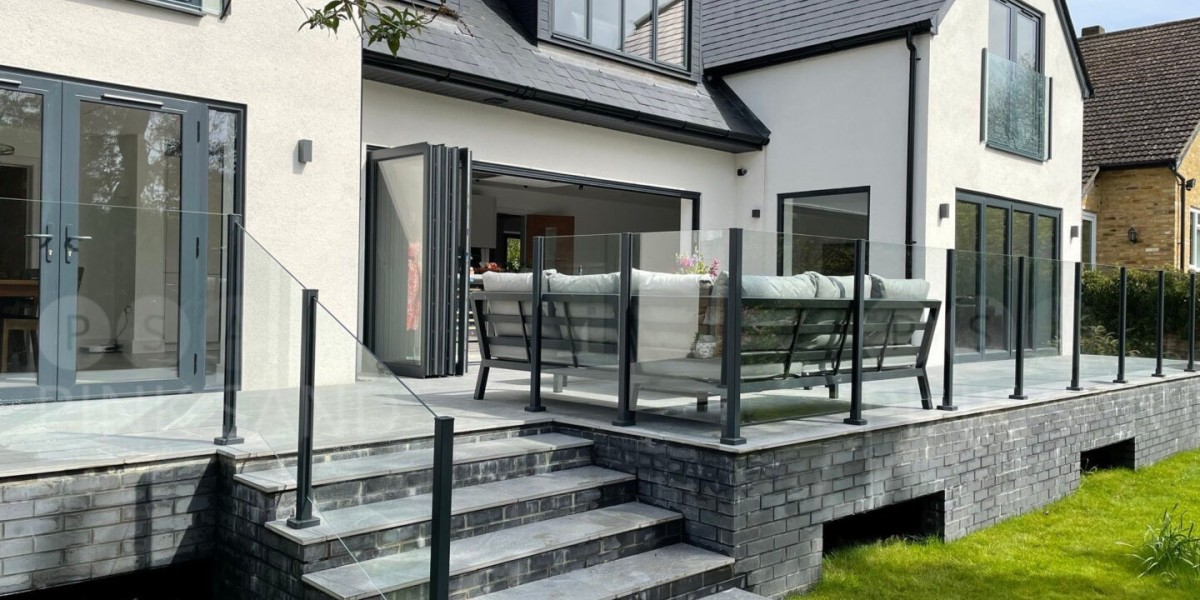There’s nothing quite like relaxing or entertaining outdoors with your favorite playlist in the background. Whether you’re hosting a barbecue, enjoying a quiet afternoon with a book, or having a garden party, good sound can elevate the entire experience. But to get consistent, balanced audio outside, you need more than just powerful speakers—you need the right strategy for wireless speaker placement.
Unlike indoor spaces, gardens don’t have walls or ceilings to help reflect and contain sound. Outdoor environments are open and unpredictable, with sound easily dissipating into the air or being absorbed by trees, grass, and other landscaping features. This makes careful speaker placement essential for even coverage across your garden or patio area.
To simplify the process and avoid costly trial and error, tools like XTEN-AV can help you design, visualize, and perfect your wireless speaker layout before setting anything up. In this blog, we’ll walk you through everything you need to know about placing wireless speakers in your garden for optimal sound quality.
XTEN-AV: Outdoor Audio Planning Made Simple
XTEN-AV is a cloud-based AV system design software that makes it easy to plan both indoor and outdoor audio setups. For garden installations, XTEN-AV allows you to map your outdoor space, factor in obstacles like trees and fences, and test different speaker positions to ensure even sound coverage.
Using XTEN-AV, you can design your garden layout with precision and test the sound dispersion from each speaker model. This eliminates guesswork and ensures your wireless speaker placement is optimized for comfort, clarity, and coverage.
Step 1: Map Your Outdoor Space
Start by measuring your garden or patio area. Note the location of:
Seating areas and walkways
Dining zones or outdoor kitchens
Fire pits, pools, or water features
Trees, walls, fences, and other obstacles
Use XTEN-AV to create a digital map of your garden. You can input exact dimensions and place features within the design, which helps you see how sound will travel through the space.
Step 2: Define Listening Zones
Next, think about where people will spend time in the garden. You don’t need loud sound everywhere—you just want consistent coverage in specific zones.
Common garden listening zones include:
Patio or deck seating areas
Dining table zones
Poolside or lounge areas
Open lawn or event spaces
In XTEN-AV, label each zone and create a sound coverage plan based on how often each area is used and how immersive the sound should be.
Step 3: Choose the Right Type of Wireless Speakers
Outdoor speakers are built to withstand weather, but not all wireless speakers are created equal. Choose models that are:
Weatherproof or water-resistant
Battery-powered or solar-powered (if you don’t have nearby power)
Bluetooth or Wi-Fi-enabled for easy wireless connectivity
Directional or 360-degree sound based on placement needs
Some models are disguised as rocks or planters, making them perfect for blending into your garden decor.
Upload your speaker models into XTEN-AV to simulate how each one performs in your environment.
Step 4: Use Multiple Low-Volume Speakers
Instead of blasting sound from one powerful speaker, use several smaller ones placed strategically around your garden. This provides even coverage without creating overly loud zones or disturbing your neighbors.
Guidelines:
Place speakers every 15 to 25 feet for even distribution
Aim for a gentle overlap in sound coverage zones
Keep volume consistent across all speakers
XTEN-AV’s simulation tools allow you to visualize these coverage overlaps and adjust spacing to eliminate dead zones or volume spikes.
Step 5: Consider Speaker Placement Height and Orientation
Outdoor audio is affected by height and angle just like indoor setups. For even coverage:
Mount speakers at ear level when possible
Angle directional speakers slightly downward toward seating areas
Avoid placing speakers too close to the ground unless they are specifically designed for that purpose
With XTEN-AV, you can set speaker height and tilt angle to simulate how sound will reach the listener’s ears.
Step 6: Avoid Reflective and Absorptive Surfaces
Gardens often include a mix of surfaces like stone patios, grass, hedges, and fences. These materials absorb and reflect sound differently:
Hard surfaces like walls or decks can reflect sound and cause echo
Soft materials like grass and foliage absorb sound, reducing clarity
XTEN-AV lets you assign material types to surfaces so you can predict and adjust for these effects during planning.
How to Place Wireless Speakers Around Your Garden for Even Sound Coverage
Introduction
There’s nothing quite like relaxing or entertaining outdoors with your favorite playlist in the background. Whether you’re hosting a barbecue, enjoying a quiet afternoon with a book, or having a garden party, good sound can elevate the entire experience. But to get consistent, balanced audio outside, you need more than just powerful speakers—you need the right strategy for wireless speaker placement.
Unlike indoor spaces, gardens don’t have walls or ceilings to help reflect and contain sound. Outdoor environments are open and unpredictable, with sound easily dissipating into the air or being absorbed by trees, grass, and other landscaping features. This makes careful speaker placement essential for even coverage across your garden or patio area.
To simplify the process and avoid costly trial and error, tools like XTEN-AV can help you design, visualize, and perfect your wireless speaker layout before setting anything up. In this blog, we’ll walk you through everything you need to know about placing wireless speakers in your garden for optimal sound quality.
XTEN-AV: Outdoor Audio Planning Made Simple
XTEN-AV is a cloud-based AV system design software that makes it easy to plan both indoor and outdoor audio setups. For garden installations, XTEN-AV allows you to map your outdoor space, factor in obstacles like trees and fences, and test different speaker positions to ensure even sound coverage.
Using XTEN-AV, you can design your garden layout with precision and test the sound dispersion from each speaker model. This eliminates guesswork and ensures your wireless speaker placement is optimized for comfort, clarity, and coverage.
Step 1: Map Your Outdoor Space
Start by measuring your garden or patio area. Note the location of:
Seating areas and walkways
Dining zones or outdoor kitchens
Fire pits, pools, or water features
Trees, walls, fences, and other obstacles
Use XTEN-AV to create a digital map of your garden. You can input exact dimensions and place features within the design, which helps you see how sound will travel through the space.
Step 2: Define Listening Zones
Next, think about where people will spend time in the garden. You don’t need loud sound everywhere—you just want consistent coverage in specific zones.
Common garden listening zones include:
Patio or deck seating areas
Dining table zones
Poolside or lounge areas
Open lawn or event spaces
In XTEN-AV, label each zone and create a sound coverage plan based on how often each area is used and how immersive the sound should be.
Step 3: Choose the Right Type of Wireless Speakers
Outdoor speakers are built to withstand weather, but not all wireless speakers are created equal. Choose models that are:
Weatherproof or water-resistant
Battery-powered or solar-powered (if you don’t have nearby power)
Bluetooth or Wi-Fi-enabled for easy wireless connectivity
Directional or 360-degree sound based on placement needs
Some models are disguised as rocks or planters, making them perfect for blending into your garden decor.
Upload your speaker models into XTEN-AV to simulate how each one performs in your environment.
Step 4: Use Multiple Low-Volume Speakers
Instead of blasting sound from one powerful speaker, use several smaller ones placed strategically around your garden. This provides even coverage without creating overly loud zones or disturbing your neighbors.
Guidelines:
Place speakers every 15 to 25 feet for even distribution
Aim for a gentle overlap in sound coverage zones
Keep volume consistent across all speakers
XTEN-AV’s simulation tools allow you to visualize these coverage overlaps and adjust spacing to eliminate dead zones or volume spikes.
Step 5: Consider Speaker Placement Height and Orientation
Outdoor audio is affected by height and angle just like indoor setups. For even coverage:
Mount speakers at ear level when possible
Angle directional speakers slightly downward toward seating areas
Avoid placing speakers too close to the ground unless they are specifically designed for that purpose
With XTEN-AV, you can set speaker height and tilt angle to simulate how sound will reach the listener’s ears.
Step 6: Avoid Reflective and Absorptive Surfaces
Gardens often include a mix of surfaces like stone patios, grass, hedges, and fences. These materials absorb and reflect sound differently:
Hard surfaces like walls or decks can reflect sound and cause echo
Soft materials like grass and foliage absorb sound, reducing clarity
XTEN-AV lets you assign material types to surfaces so you can predict and adjust for these effects during planning.
Step 7: Create a Balanced Layout
Try to create symmetry in your speaker placement to achieve balanced sound. This doesn’t always mean placing speakers in a straight line—instead, you want to distribute them so that every major zone gets similar sound levels.
Example Layout:
Two speakers flanking the patio area
Two more near the lawn seating
A single rock-style speaker near the fire pit
Optional additional speakers near the garden path or pool
Test this layout in XTEN-AV to check if your coverage zones blend seamlessly.
Step 8: Account for Power and Connectivity
Make sure each wireless speaker can connect to your network or source device and has a reliable power source.
If using Bluetooth, keep all speakers within the effective range
For Wi-Fi systems, ensure strong signal coverage using mesh extenders
Solar-powered speakers work well in gardens with good sunlight
If you’re using smart speakers, ensure they’re weather-rated and positioned under cover
Map your connectivity and power zones in XTEN-AV to ensure signal reliability and consistent performance.
Bonus Tips for Great Outdoor Audio
Sync all speakers to play from the same source for seamless audio
Use EQ settings to adjust bass and treble depending on open or enclosed areas
Keep volume moderate to preserve ambiance and avoid disturbing wildlife or neighbors
Hide speaker cables and mounts for a cleaner visual appearance
Perform a sound test at different times of the day to account for changing outdoor noise levels
Conclusion
A beautiful garden deserves audio that matches its atmosphere. With strategic wireless speaker placement, you can create a soothing or lively soundscape that flows naturally through every part of your outdoor space.
Read more: https://www.gamesfree.ca/read-blog/57439







